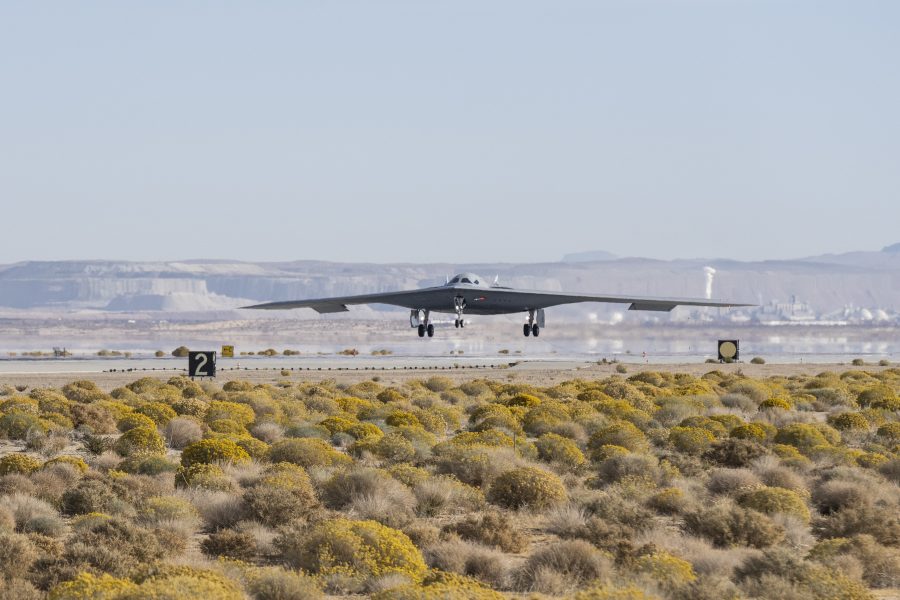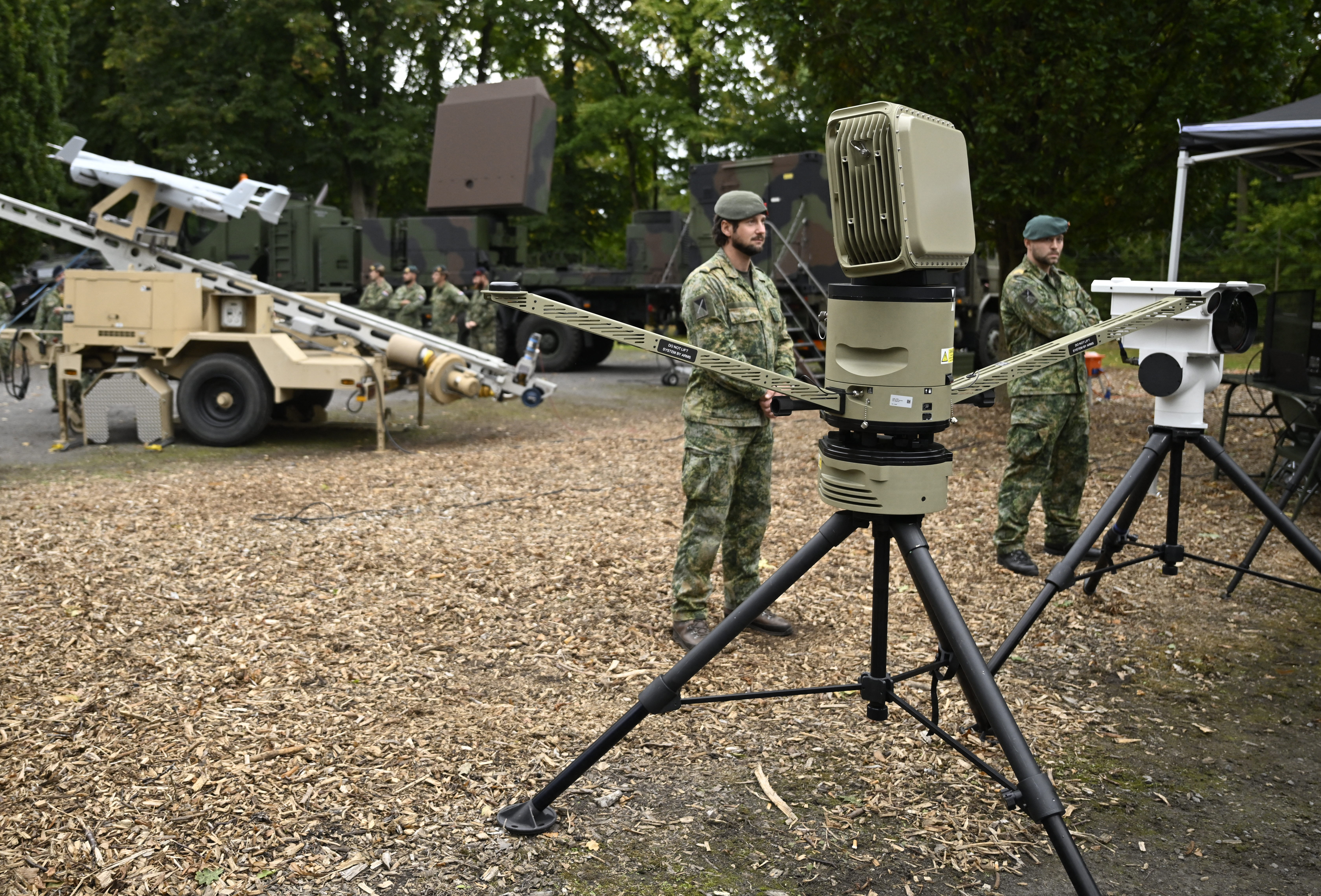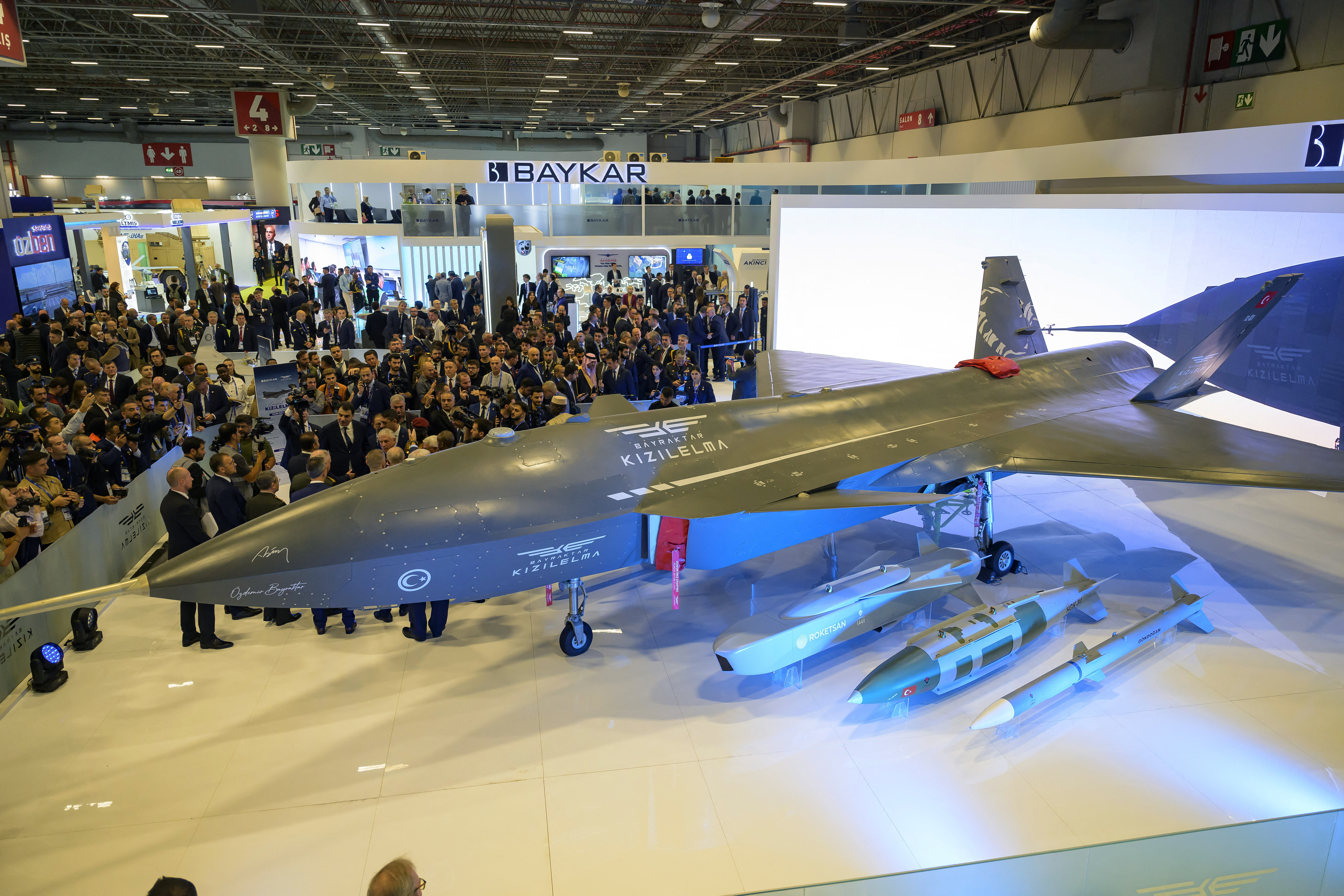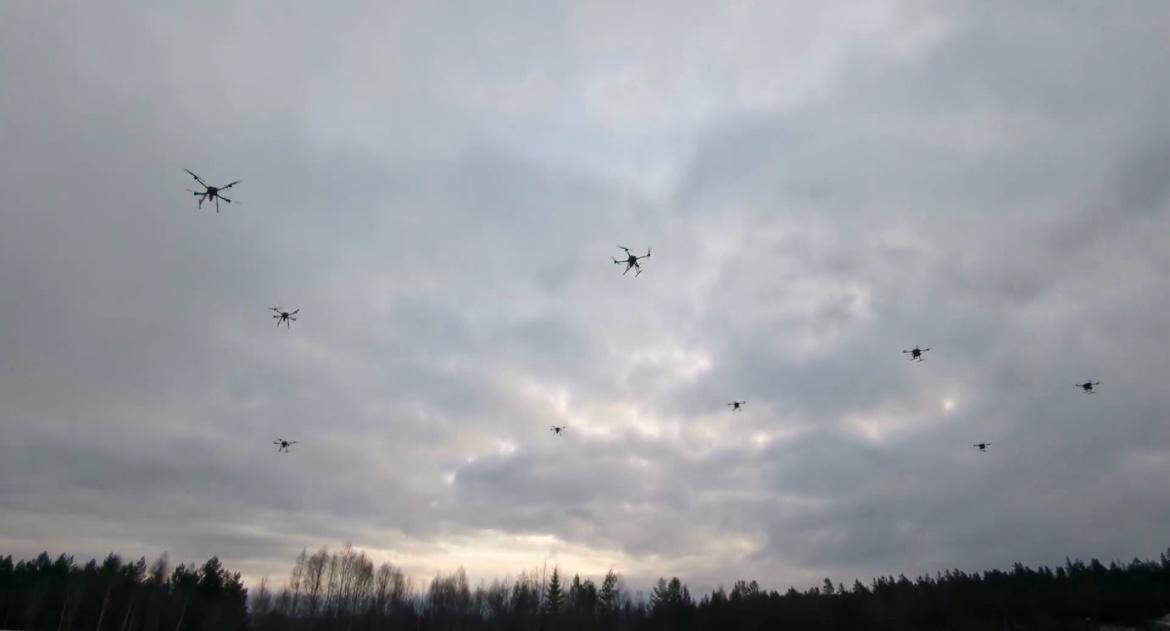
A second B-21 bomber will fly soon, and production increases are a recognition of a changing global environment and the important of long-range strike, according to Gen. Thomas A. Bussiere, head of Air Force Global Strike Command.
“We should see the second developmental test bird fly shortly,” Bussiere said in July 25 interview with Air & Space Forces Magazine. It has been 20 months since the first B-21 flew in November 2023, and Northrop Grumman aeronautics president Tom Jones has said that aircraft is flying about two times per week.
The number of aircraft on the production line is classified, although the Air Force revealed in 2022 that at least six are in some stage of construction.
“I’m pleased with the progress” of the production and test effort, Bussiere said.
Bussiere, who has been nominated to be Vice Chief of Staff, added that the B-21 was deliberately not a “reach-for-the-stars” leap in technology, but a judicious blend of new stealth capabilities with more maintainability, to create an aircraft with greater availability.
Production Increase
While the B-21 continues to undergo testing, the program recently received a major boost from lawmakers, who passed a reconciliation bill that includes $4.5 billion to increase B-21 production capacity.
The plus-up “was not a surprise,” Bussiere said. “We have been studying this now for a little over a year. We have great understanding on the capability, capacity, and cost to … increase the ramp rate.”
Driving the increase in production capacity is “a great realization of the value and prominence of long-range strike and the ability to hold at risk anything on the planet at a time and place of our choosing,” Bussiere said. That, combined with “the urgency to replace our aging bombers and the increased cost and challenges of sustaining a legacy bomber fleet, coupled with a world environment that, quite frankly, everybody looks at and says, ‘we need more long range strike, not less,’ and so that all comes together.”
Contractor Northrop Grumman, Air Force Materiel Command, and Headquarters Air Force all combined to analyze how they could increase production rate, Bussiere said. That rate remains secret, but defense leadership comments and budgets over the past few years suggests the number is around seven annually, at peak.
The increase in funding “would enable the ramp rate to be a little bit steeper than the current flow,” Bussiere said, without disclosing any numbers.
Faster production could “enable” the Air Force to buy greater numbers of B-21s, but Bussiere said the program is still aimed broadly at “more than 100” aircraft, and he suggested no higher number is yet planned.
Bussiere told the Senate Armed Services Committee in May that he supports “assessing the increase of the production from 100 to 145” B-21s, given that the strategic environment has changed since the 100 benchmark was set around 2018. Gen. Anthony Cotton, head of U.S Strategic Command, has also urged that the U.S. increase the B-21 program to 145 aircraft.
Since the 100-aircraft number was set, Russia invaded Ukraine and China has been rapidly expanding its strategic forces, Bussiere noted.
Early in 2024, former Pentagon acquisition and sustainment chief William LaPlante—who in an earlier Pentagon job developed the B-21 program, as Air Force acquisition executive—said the program’s low production rate was intentional, to protect it from the kind of budget cuts that slashed the B-2 from 132 aircraft to just 20. Bussiere said he’s not worried that increasing production will put the B-21 in any budgetary danger, though.
“I don’t believe the program will be at risk if it continues to go as successfully as it is,” he said. “Usually, programs get at risk when they get delayed or they have trouble in technology or capability or capacity in the production phase … I’m very happy right now, with the stage of the developmental test with the B-21.”
Lessons Learned
The Raider’s success is due in part to the Air Force’s long experience with the B-2, he noted.
“To be fair, the company, and our operators, maintainers and acquisition professionals and engineers, do have a little bit of leg up on previous weapon systems with the 30-plus years of understanding the dynamics and what we learned on the B-2,” he said. “We’ve taken those lessons in in operations, and, you know, aviator air vehicle interfaces and ease of maintenance. … All that comes together.”
The design philosophy for the B-21 was not to make huge generational leap, but to perfect what was learned on the B-2, advance some of the capabilities it had, and make it a more robust and reliable platform, Bussiere said.
“I would say it’s evolutionary in technology,” he said. “It’s not a leap-past generational capabilities to try to reach for the stars,” but there’s been improvement in the materials and design and sustaining maintenance “to make it a more viable platform. I think that’s the underpinning of it.”
The Air Force “learned a lot from how we did initial and then upgraded capabilities on the B-2, and all those lessons were incorporated into the design,” he said. “There are other unique aspects of the B-21 that were not part of the B-2 production that will make it … a more practical platform to maintain.”
He noted that maintainers and pilots of the B-2 were “kind of embedded with the acquisition engineers and industry partners, and they were able to optimize all kinds of different facets of the of the weapon system.” This ranged from displays and controls in the cockpit “for aircrew optimization” as well as the placement of “access panels or…within the subcomponents of the platform to make it easier for maintenance to…get access.”
What was learned “after three-plus decades with industry and operational (low observables) maintenance have been incorporated into the into the design and the materials of the B-21 to optimize its characteristics, so that it is less maintenance-intensive than the B-2.”
Although an Air Force spokesperson has said initial B-21s could be pressed into combat service if needed, there’s no plan to do that with the test aircraft, Bussiere said.
“The production version and the fielding version of this program are tightly, tightly, tightly wound to make sure that the test birds and the production birds are as close to the same [configuration] as they possibly can be, so we don’t have any lag in combat capability when we put it on the field,” he said. Unlike the B-2, which was initially certified only for the nuclear mission and only later in a conventional role, the B-21 will be certified for both missions from the outset.
Northrop officials have said the B-21 will be a “daily flyer,” but Bussiere said he’s not sure what that will mean.
“All our airplanes are daily flyers,” he said. “I think what they meant to say is that the design, the maintenance of the low-observable characteristics and the maintenance of line replaceable units, and the ability to maintain that normal, day-to-day viability is baked into the B-21 to make it easier” with “less intensive maintenance .. is probably what they meant,” Bussiere said.
Although the original 2015 “Long-Range Strike Bomber” contract specified that both crewed and uncrewed versions of what would become the B-21 were to be developed, that isn’t part of the immediate plan, Bussiere said.
“We currently don’t have that built in into the program,” he said. “I do remember, vaguely, that being part of the original direction and … potential options, but we’re currently not building one of those.”
The post Air Force Global Strike Boss: Second B-21 to Fly ‘Shortly’ appeared first on Air & Space Forces Magazine.

Air, AFGSC, Air Force Global Strike Command, B-21 fleet, B-21 production, Gen. Thomas A. Bussiere, Northrop Grumman
Air & Space Forces Magazine
[crypto-donation-box type=”tabular” show-coin=”all”]






